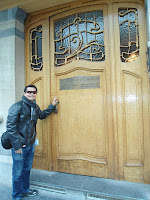La Grand Palace in Brussels

The Grand-Place is an outstanding example of the eclectic and highly successful blending of architectural and artistic styles that characterizes the culture and society of this region. Through the nature and quality of its architecture and of its outstanding quality as a public open space, it illustrates in an exceptional way the evolution and achievements of a highly successful mercantile city of northern Europe at the height of its prosperity. The earliest written reference to the Nedermarckt (Lower Market), as it was originally known, dates from 1174. The present name came into use in the last quarter of the 18th century. It is located on former marshland on the right bank of the River Senne, to the east of the castellum, a defensive outwork of the castle built around 977 by Charles of France, Duke of Lower Lotharingia. The marsh was drained in the 12th century. The present rectangular outline of the Grand'Place has developed over the centuries as a result of successiv...

